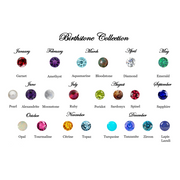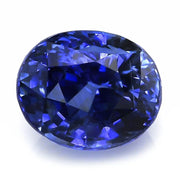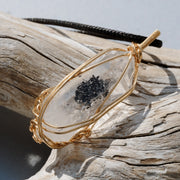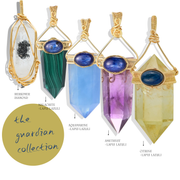Sapphire History
Ancient Origins
Sapphire, one of the most revered gemstones in history, has long symbolized wisdom, loyalty, and divine favor. The name “Sapphire” originates from the Greek word sappheiros, meaning “blue stone.” Its use dates back over 2,500 years, with ancient Persians believing the sky was painted blue by the reflection of sapphire gemstones. The Greeks wore sapphire to gain clarity and guidance from the gods, while Buddhist monks used it to promote peace of mind and spiritual insight.

Cultural Significance
Throughout centuries, sapphire has adorned royalty, clergy, and mystics alike. Medieval kings wore sapphire talismans for protection, believing it shielded them from envy and betrayal. The gemstone was also seen as a symbol of divine wisdom, adorning the robes of priests and sacred relics. In modern times, sapphires are best known for their presence in royal engagement rings—most famously, Princess Diana’s iconic blue sapphire ring—making them a lasting symbol of truth, faithfulness, and eternal love.

Symbolic Uses Through History
Across cultures, sapphire has represented purity, virtue, and celestial hope. Ancient healers associated it with calmness and clarity, using it to treat ailments of the mind and spirit. Over time, its enduring blue hue became synonymous with loyalty, protection, and spiritual enlightenment.

Table of contents

Origin
Sri Lanka (Ceylon) – Renowned for vivid cornflower-blue sapphires, valued for their exceptional brightness and purity.
Kashmir (India) – Produces some of the world’s rarest and most desirable velvety-blue sapphires, treasured for their rich saturation and soft glow.
Madagascar – A modern source of high-quality sapphires with a wide range of colors, from royal blue to pink, yellow, and green.
Feature
Chemical Formula: Al₂O₃ (Aluminum Oxide) — sapphire is a variety of corundum, second only to diamond in hardness.
Mohs Hardness: 9 — extremely durable and ideal for daily wear in jewelry, from rings to watches.
Color: Although most famous for its deep blue hue, sapphire occurs in nearly every color except red (which is classified as ruby). Trace elements define its color: iron and titanium produce blue, chromium creates pink, and vanadium gives rise to violet tones.
Symbolism: Sapphire symbolizes truth, faith, and wisdom. Spiritually, it enhances clarity, discipline, and insight, making it a stone of mental focus and inner peace.
-
Chakra:
Third Eye Chakra (Ajna): Stimulates intuition, clarity, and awareness.
Throat Chakra (Vishuddha): Encourages honesty, communication, and self-expression.
-
Zodiac:
Virgo
Libra
Benefits
Wisdom and Mental Clarity
Sapphire is known as the “Stone of Wisdom,” bringing focus and mental clarity. It helps calm the mind, eliminate distractions, and encourage rational thinking. This makes it ideal for scholars, creatives, and decision-makers seeking to strengthen concentration and intellectual insight.
Emotional Healing
Sapphire’s serene energy soothes emotional turbulence and promotes inner peace. It helps release negative thought patterns, fear, and anxiety, replacing them with calmness and resilience. Its balanced vibrations support emotional stability, making it a helpful stone for those recovering from stress or heartbreak.
Truth and Communication
Because of its association with the Throat Chakra, sapphire enhances communication, honesty, and self-expression. It encourages individuals to speak with integrity and clarity, strengthening trust in relationships and professional settings.
Spiritual Awareness
Sapphire connects the wearer to higher consciousness, enhancing meditation and spiritual exploration. It opens the Third Eye Chakra, allowing access to deeper intuition and wisdom. Many spiritual practitioners use sapphire to balance energies, heighten psychic awareness, and strengthen connection to divine truth.
Protection and Prosperity
In ancient times, sapphire was regarded as a talisman for protection from envy, harm, and negative forces. It is still seen as a stone of abundance, promoting prosperity and attracting positive outcomes through disciplined effort and focused intention.
Type
Blue Sapphire
The most iconic variety, blue sapphire symbolizes loyalty, wisdom, and divine favor. Its calming blue hues represent serenity and spiritual insight. Sri Lankan (Ceylon) blue sapphires are admired for their light, radiant tones, while Kashmir sapphires are famed for their deep, velvety color.
Pink Sapphire
Associated with love, compassion, and emotional healing, pink sapphire embodies the energy of the Heart Chakra. It promotes self-acceptance, forgiveness, and emotional strength, making it a gentle yet empowering gem.
Yellow Sapphire (Pukhraj)
Highly prized in Indian astrology, yellow sapphire is believed to attract wealth, wisdom, and marital happiness. It resonates with the Solar Plexus Chakra, fostering confidence and optimism.
White Sapphire
Symbolizing purity and truth, white sapphire enhances clarity and focus. Often used as a diamond alternative, it represents honesty and divine light, bringing alignment and protection to the wearer.
Star Sapphire
This rare variety displays a shimmering six-rayed star pattern known as asterism. Star sapphire is a stone of destiny and intuition, believed to guide its wearer toward fulfillment and divine purpose.
Care & Maintenance
Cleaning
Clean sapphire with warm water, mild soap, and a soft brush. Thanks to its hardness, sapphire can safely be cleaned using ultrasonic or steam methods, though care should still be taken with treated stones.
Storage
Store sapphire separately to prevent scratching softer gems. Keep it in a soft pouch or individual compartment of a jewelry box to maintain its polish and brilliance.
Handling
Avoid exposure to extreme heat or chemicals, which can affect treated sapphires. Remove sapphire jewelry before applying perfumes, lotions, or engaging in physical activity to preserve its luster.
FAQs
Q: Is sapphire a birthstone?
A: Yes, sapphire is the traditional birthstone for September, symbolizing wisdom, loyalty, and spiritual clarity.
Q: Are all sapphires blue?
A: No, sapphires come in many colors—pink, yellow, green, and even white—though blue is the most iconic and valued variety.
Q: What makes sapphire valuable?
A: Color, clarity, origin, and size determine a sapphire’s value. Kashmir and Ceylon sapphires are among the rarest and most prized.
Q: Is sapphire good for daily wear?
A: Yes, with a hardness of 9 on the Mohs scale, sapphire is one of the most durable gemstones suitable for everyday jewelry.
Q: What does sapphire symbolize spiritually?
A: Sapphire represents truth, wisdom, and divine guidance. It promotes calmness, focus, and spiritual enlightenment.
Final Thoughts
Sapphire: Benefits, Properties and Meaning of the Stone highlight why this gemstone has been cherished through centuries as a symbol of power, purity, and peace. Its dazzling colors and deep spiritual resonance make it more than just a beautiful gem—it is a stone of wisdom, protection, and truth. Whether worn for meditation, love, or luxury, sapphire continues to inspire awe and reverence as a timeless emblem of serenity and strength. With its celestial radiance and grounding energy, sapphire truly bridges the realms of the mind, spirit, and heart.






















